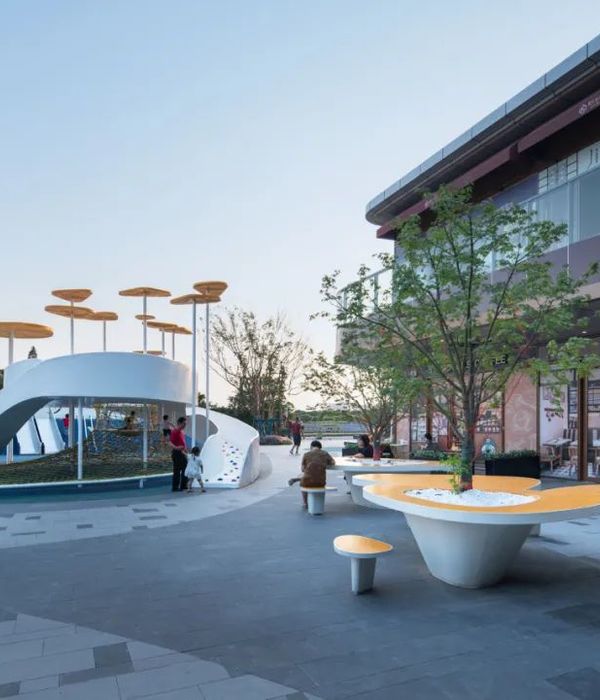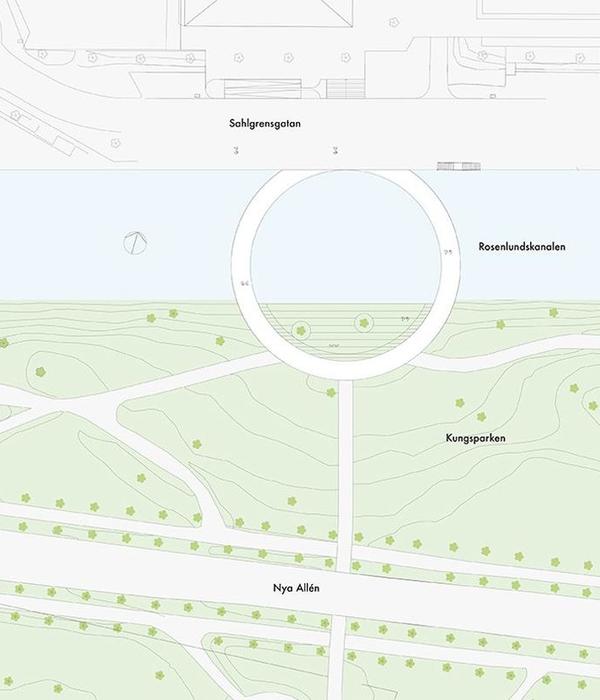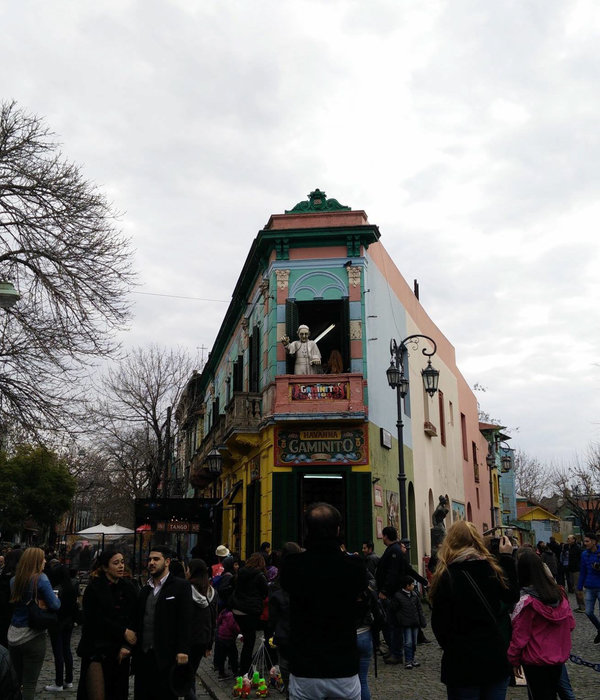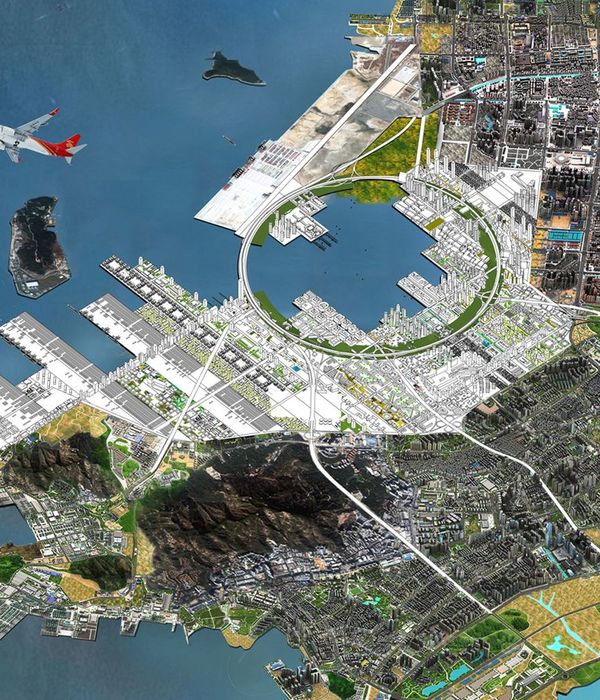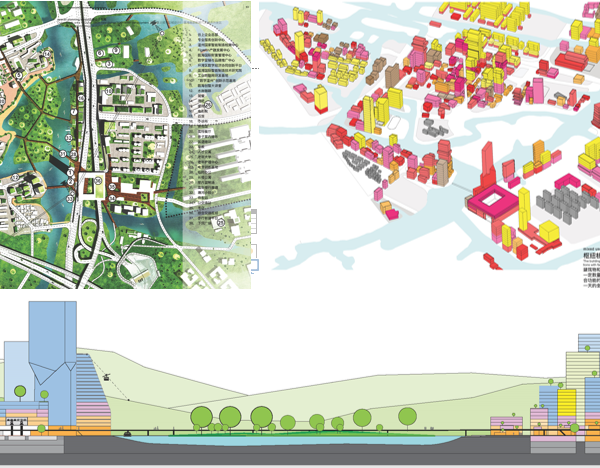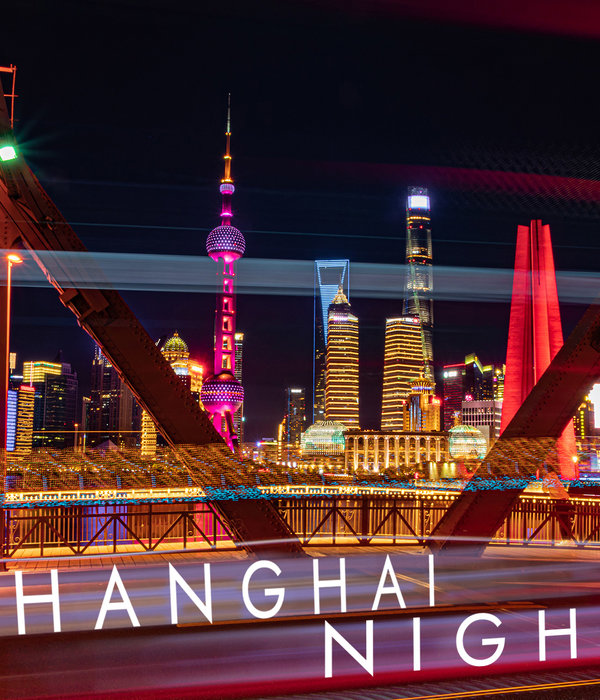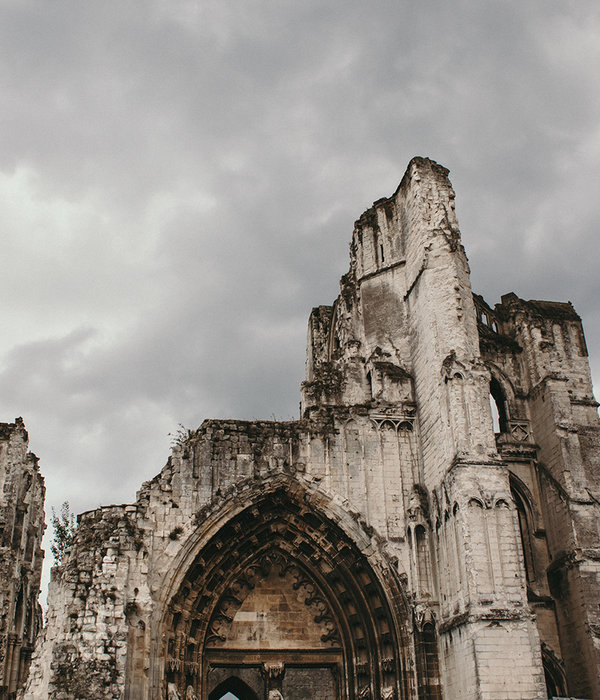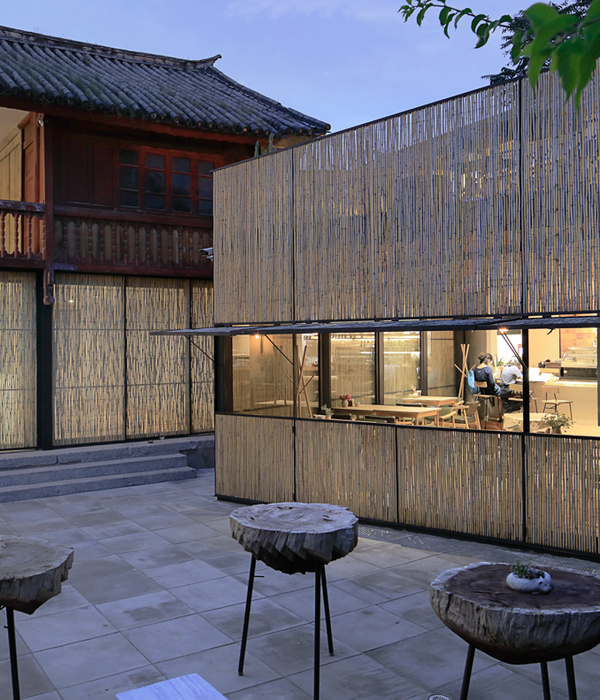MVRDV在德国卡尔斯鲁厄Ettlinger Tor地区总体规划的竞赛中获胜。MVRDV与当地居民和其他利益相关方密切合作,共同参与了决策过程的每个阶段。受卡尔斯鲁厄城市历史脉络的启发,起自卡尔斯鲁厄城堡的“凯旋大道”将被延伸到城市之外,同时使城市的这一区域更加亲密和绿色。总体规划的重点是在Ettlinger-Tor-Platz区域之上创造一个“漂浮花园”——新增一座标记老城门位置的建筑,将该城市具有差异性的南北两侧连接在一起。MVRDV与Max Dudler Architekten获得竞赛并列第一名。
MVRDV has won a competition for the masterplan of the Ettlinger Tor area in Karlsruhe, Germany. The masterplan was developed through intensive public participation from local residents and other stakeholders, who were involved in decision-making at every stage of the process. It takes inspiration from the historical fabric of the city, extending the “via triumphalis” that originates at the Karlsruhe Palace beyond the Kriegstraße and making this part of the city more intimate and green. The centrepiece of the masterplan is a “floating garden” raised above the Ettlinger-Tor-Platz – reintroducing a structure to mark the former location of the city gate in a way that connects the two sides of the city instead of separating them. MVRDV took joint-first place in the competition alongside Max Dudler Architekten.
图/Image:
© MVRDV
MVRDV的总体规划不仅填充了城市街区内的未开发区域,同时也给城市南部带来了更多绿色
MVRDV’s masterplan fills a void in the city blocks while also bringing more greenery to the southern half of the city
卡尔斯鲁厄在很大程度上,是按照启蒙运动所定义的“理想城市”而规划的一个罕见例子。围绕着卡尔斯鲁厄王宫,城市从两个角度开发:宫殿南面是高密度的城市中心街区,北面则是由公园和森林组成的“绿色城市”。MVRDV的总体规划模糊了城市南北两侧的差异,不仅填充了城市街区内的未开发区域,同时也给城市南部带来了更多绿色。
Karlsruhe is a rare example of a city still largely organised around the enlightenment conception of the “ideal city”. The city grew around the Karlsruhe Palace and as a result it is divided into two, with the densely packed blocks of the city centre to the south of the palace, and a “green city” of parks and forests to the north. MVRDV’s masterplan blurs this distinction, filling a void within the city blocks while also bringing more greenery to the southern half of the city.
图/Image: ©
MVRDV
总体规划最引人注目的特色是Ettlinger-Tor-Platz区域上方飞碟形的“漂浮花园”
The masterplan’s most eye-catching feature is a dish-shaped “floating garden” above Ettlinger-Tor-Platz
与卡尔斯鲁厄曾经绝对主义的城市规划相比,MVRDV的方案是公众密切参与的结果,都市架构的每一步设置都回应了公众的愿望。总体规划第一步的设想是在该区域填充与城市北部建筑高度相匹配的四层高的体块。在此基础上, “雕刻” 这些体块来为城市创造必要的空间:创造一个广场以保留通往Badisches Staatstheater歌剧院的道路;调整布局来保护原有的树木;新增两条相交的道路以改善街区内部的连接性;根据需求在街区内部创建庭院。
In contrast to the absolutist urban planning of Karlsruhe’s past, MVRDV’s proposal resulted from an intensive process of public participation, with each step in the urban framework responding democratically to the desires of the public. The first step in developing the masterplan was to imagine the area filled with four-storey blocks, matching the heights of the city blocks to the north. From this starting point, these blocks are “carved” to create the necessary spaces for the city: A plaza is created to preserve the approach to the Badisches Staatstheater; established trees are preserved by carving the blocks to fit around them; two diagonal streets are added to improve connections; and courtyards are created within the blocks as required.
图/Image:
© MVRDV
总体规划引入并“雕刻”与城市北部建筑高度相匹配的四层高的体块,为城市创造必要的空间
Four-storey blocks, matching the heights of the city blocks to the north, are “carved” to create the necessary spaces for the city
总体规划最引人注目的特色是Ettlinger-Tor-Platz区域上方飞碟形的“漂浮花园”,它与凯旋大道上的卡尔斯鲁厄城堡形成鲜明对比。借鉴了城堡拥有的视野特权,漂浮花园同样拥有欣赏卡尔斯鲁厄天际线的视野,但设计又体现了“回归群众”的理念。漂浮花园包含一个社区讲坛和一间酒店。建筑底部的曲面结构由镜面玻璃构成,反射天际线并传达给地面上的观众;圆形的屋顶花园则扮演卡尔斯鲁厄的概念地图,道路和植物复制自城市里32条从中心向外辐射的街道。
Completing this ensemble is the masterplan’s most eye-catching feature, a dish-shaped “floating garden” above Ettlinger-Tor-Platz that provides a counterpoint to the Karlsruhe Castle on the via triumphalis. It offers views across the rooftops of Karlsruhe, emulating the castle’s privileged view of the city but conceptually “returning it to the people”. Inside, the floating garden houses a community forum and a hotel. The curved underside of the structure is completed in mirrored glass to reflect a view of the skyline to viewers on the ground, while the circular rooftop garden is fashioned as a conceptual map of Karlsruhe, with paths and plants replicating the city’s 32 radial streets.
图/Image:
©
MVRDV
漂浮花园底部的曲面结构由镜面玻璃构成,反射天际线并传达给地面上的观众
The curved underside of the floating garden is completed in mirrored glass to reflect a view of the skyline to viewers on the ground
“卡尔斯鲁厄是一座完全独特的城市。我们的总体规划是延续和庆祝那些使这座城市如此特别的元素。”MVRDV联合创始人Winy Maas说道:“花园下方的镜面和屋顶花园成为了‘辐条城市’(注:卡尔斯鲁厄昵称)的微型复制品,我们总体规划的焦点建筑成为了这座城市、周围建筑和那里居民的纪念碑。”
“Karlsruhe is a city with a totally unique character. Our masterplan is both a continuation and a celebration of the elements that make it so special”, says MVRDV Founding Partner Winy Maas. “With a mirrored underbelly, and a rooftop garden forming a miniature replica of the ‘Fächerstadt’ layout, the focal point of our masterplan becomes a monument to the city, to the buildings around it, and to the people that live there.”
图/Image:
©
MVRDV
新建建筑的屋顶将种满绿植以创造一个屋顶森林
The rooftops of the new city blocks will be densely planted to create a rooftop forest
四层高建筑群的每个立面都各具特色,业主和利益相关方能够将他们自己的特点引入这个街区。新建建筑的屋顶将密集种满绿植以创造一个屋顶森林,楼梯和桥梁使其成为一个畅通的都市公园,并且有助于减少城市热岛效应。
On the four-storey blocks, each façade is different in character, with building owners and stakeholders able to bring their own flair to the district. The rooftops of these new blocks will be densely planted to create a rooftop forest, with stairs and bridges making it an accessible urban park, contributing to a reduction in the urban heat island effect.
图/Image:
©
MVRDV
“漂浮花园”与凯旋大道上的卡尔斯鲁厄城堡形成鲜明对比
The floating garden provides a counterpoint to the Karlsruhe Castle on the via triumphalis
总体规划仔细考虑了卡尔斯鲁厄地区行政办公室(法院)的未来,办公室目前位于总体规划基地西侧的一座过时的现代主义塔楼中。该计划使行政办公室可以分阶段搬迁到低层建筑里,原大楼可以被改造成住宅公寓,或者被拆除和重建。另一项提议是行政办公室可以搬入Ettlinger-Tor-Platz上方的新建筑中取代漂浮花园,之后也可以改造或重建原建筑。总体规划中的一些位置也被确定为未来高层住宅的理想地点,通过优化该地区的功能组合,将打造一个更有活力的城市中心。
The masterplan was created with careful consideration given to the future of the district administration office (Landratsamt) of Karlsruhe, which is currently housed in an outdated modernist tower on the west of the masterplan site. The plan allows for a phased move to the low-rise block that would occupy the same area, after which the tower could be either renovated as residential apartments, or demolished and replaced. A further alternative offers a scenario in which the district administration office would move into a new building hovering over the Ettlinger-Tor-Platz – replacing the floating garden – after which the Badenwerk high-rise could also be either modernised or replaced. Other locations in the masterplan are also identified as ideal locations for the future addition of residential high-rises, contributing to a more lively city centre by improving the area’s mix of functions.
图/Image:
© MVRDV
剖面图
Section
MVRDV建筑规划事务所由Winy Maas、Jacob van Rijs和Nathalie de Vries创立于荷兰鹿特丹,致力于为当代的建筑和都市问题提供解决方案。MVRDV的创作基于深度研究与高度协作,各领域的专家、客户及利益相关方从项目初期一直参与设计的全过程。直率而真诚的建筑、都市规划、研究和装置作品堪称典范,让城市和景观朝向更美好的未来发展。
MVRDV的早期项目,如荷兰公共广播公司VPRO的总部,以及荷兰阿姆斯特丹的WoZoCo老年公寓,都获得了广泛的国际赞誉。MVRDV250余位建筑师、设计师和城市规划师在多学科交叉的设计过程中,始终坚持严格的技术标准和创新性研究。MVRDV采用BIM技术,公司内拥有正式的BREEAM和LEED顾问。MVRDV与荷兰代尔夫特理工大学合作运营独立智库和研究机构The Why Factory,通过展望未来都市,为建筑及都市主义提供发展议程。
更多详细信息,请联系MVRDV亚洲公共关系部
+86 021 6288 0609 或
{{item.text_origin}}

